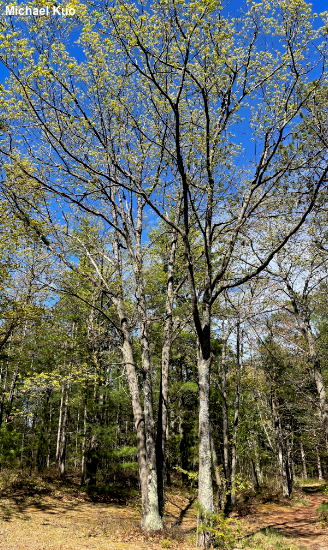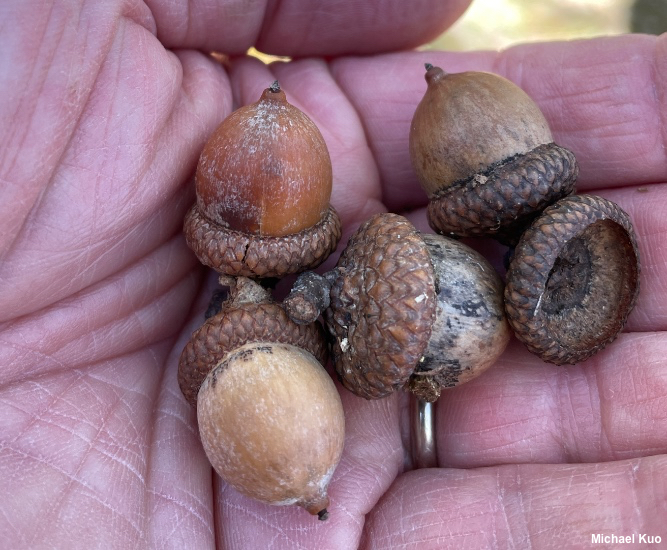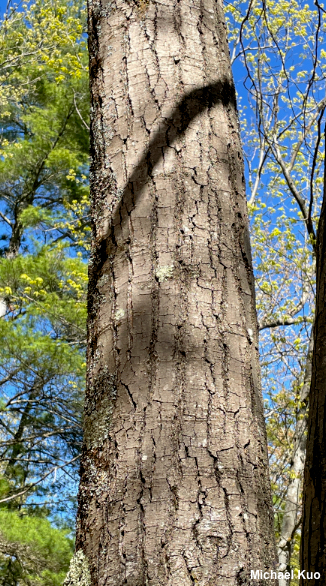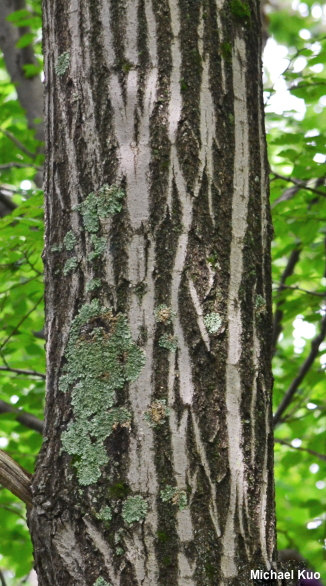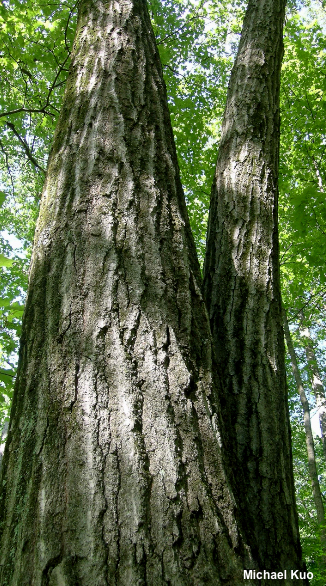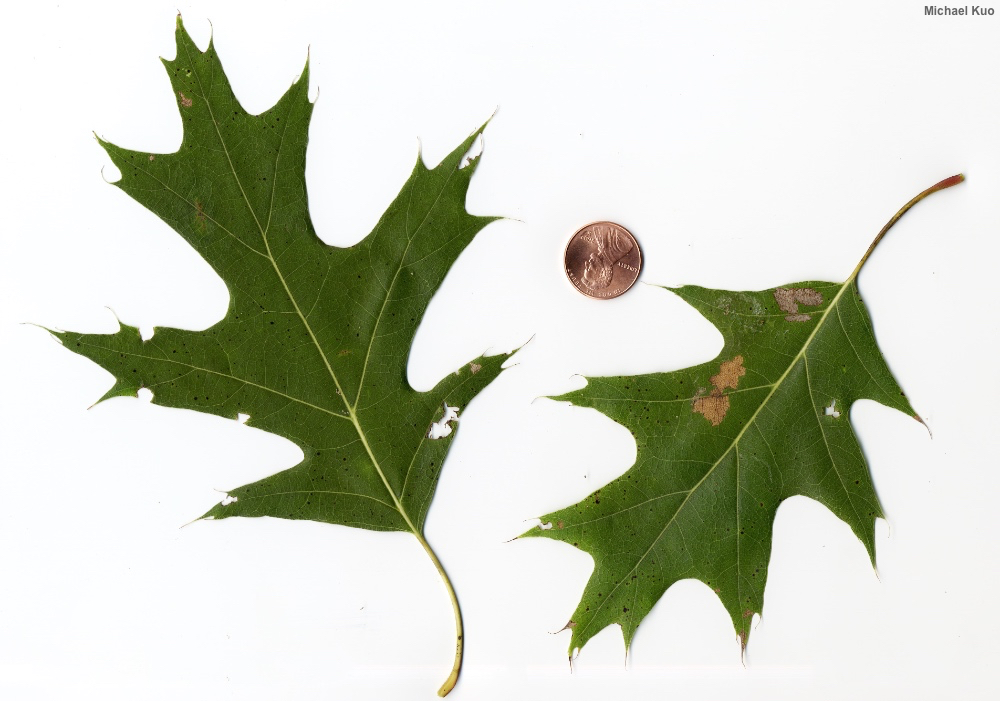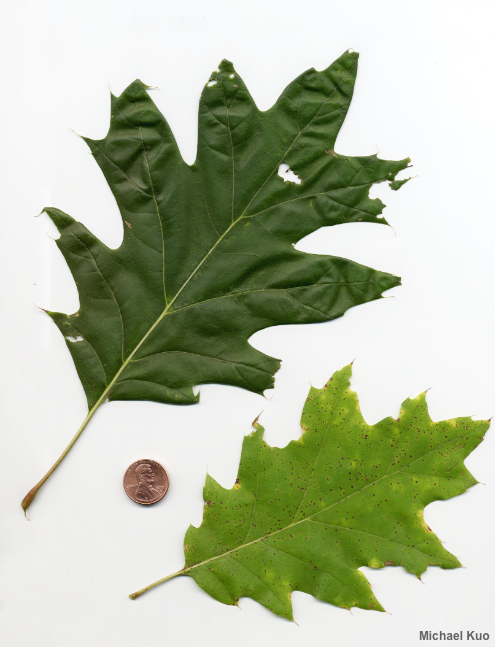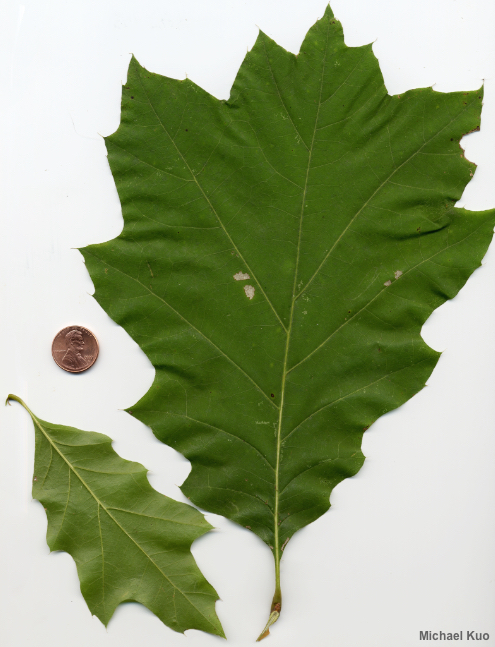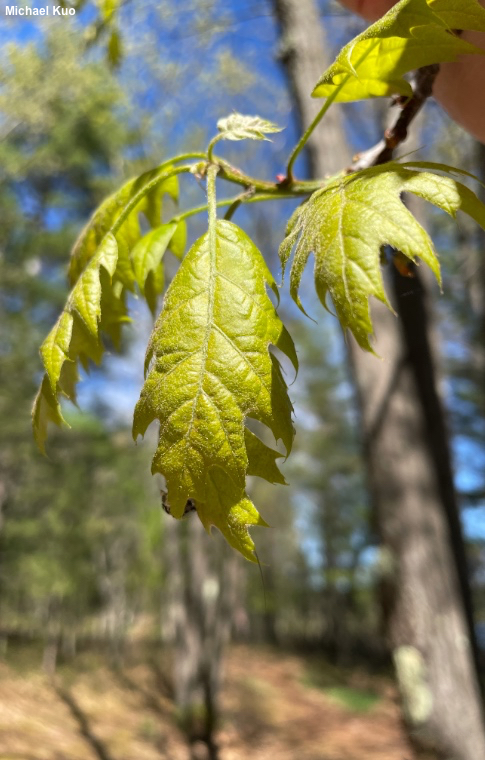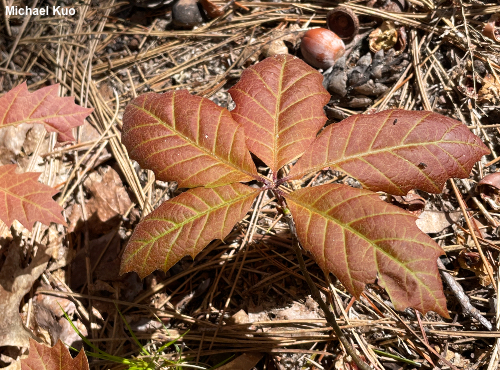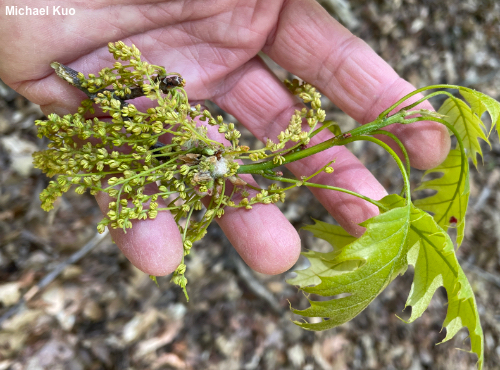 Quercus rubra (northern red oak) |
|
This is the most common "red oak" in the Midwest and eastern United States—although, broadly speaking, "red oaks" in general make up a large group of species within Quercus, the genus for oaks. In this broad sense, red oaks have leaves with bristle tips (tiny little points at the tips of the lobes) and acorns that fall every two years, while "white oaks" (in the broad sense) lack bristle tips and have acorns that fall every year. Northern red oak (Quercus rubra) is fairly variable within its range, especially when it comes to its bark, and is probably best identified by its leaves, acorns, and buds. Many mushrooms are associated with northern red oaks—too many to make a comprehensive list. Mycorrhizal species include many species of Amanita, more boletes than you can imagine, Cortinarius torvus, Hemileccinum subglabripes, many species of Lactarius, Leccinum albellum, species of Phylloporus, innumerable species of Russula (including Russula tenuiceps), species of Tylopilus, and many others. Saprobes decomposing the wood of northern red oak include Inonotus dryadeus, Laetiporus cincinnatus, and Stereum ostrea. |
|
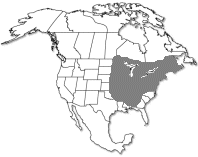
|
|
|
|
|
|
|
|
|
|
|
|
|
|
|
|
|
|
|
Kuo, Michael (June, 2022). Quercus rubra (northern red oak). Retrieved from the MushroomExpert.com website: www.mushroomexpert.com/trees/quercus_rubra.html All text and images © , mushroomexpert.com. |
